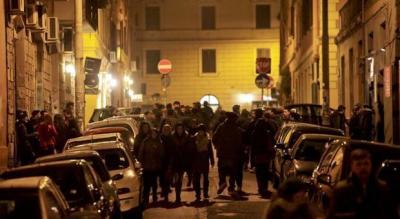Drugs market on the rise in Rome

ROME – Statistics form the Anti-Mafia District Directorate (DDA) have revealed the growth of the capital’s drug market, with the Eternal City being increasingly confirmed as the only large Italian city in which the cycle of drug trafficking operates according to the division of the various 'open' and 'closed' drug marketplaces.
Recent surveys have identified some 100 marketplaces across the squares of the city which deal with the distribution of drugs with the help of foreigners.
In the Eternal City, large criminal organisations approve buyers’ orders and coordinate with mediators in countries such as Spain and Holland, transporting large quantities of illegal substances across the Italian border.
Over 53 kilograms of heroin was seized by the Eternal City’s law enforcement in 2018, an increase of four kilograms in comparison to 2017. Investigators also revealed an increase in the quantity of cocaine seized, with 378 kilograms being found in 2018 in the face of the 310 kilograms recovered in 2017.
According to the Lazio Observatory on Legality, between July 2017 and June 2018, 965 suspects of criminal associations aimed at drug trafficking were arrested.
In the ‘open’ squares across the city, for the most part drug sales take place without the use of a real protective structure in areas of nightlife where the youth gather. Here, hashish, marijuana, heroin and also psychotropic drugs that increase a sense of dizziness are sold.
The principal central areas in which this takes place are San Lorenzo, the Esquilino district, Pigneto, Ponte Sisto, Trastevere, and Campo de’ Fiori. Meanwhile, on the outskirts, sales also operate in Centocelle, the Alessandrino and Borghesiana areas, Torre Maura and Torre Angela. In these areas Roman vendors are often assisted by Nigerians, Moroccans and Tunisians.
In operations in Latium and Nadir, the police of central Rome alone seized 16 kilograms of hashish and 3 kilograms of cocaine.
A network of drug trafficking being coordinated by a group of Moroccans and Italians in San Lorenzo was also discovered. The group was in contact with members of the Polerino-Orlando di Marano clan, some of whom reside in Spain.
Also in San Lorenzo state police found 11 kilograms of ketamine and 40 shells of MDMA. In Torpignattara the “red drug”, also called madness or Hitler, is prominent and is largely consumed within the Bengali community.
In addition, there are the ‘closed’ squares of San Basilio, Tor Bella Monaca, Montespaccato, Romanina, Nuova Ostia, Tufello, Laurentino, Guidonia. In these areas, a system based on the Neapolitan ‘Scampia model’ is adopted.
The drug market is organised into shifts of “lookouts,” with hallways and garages of certain buildings even being monitored by video surveillance. Here, is possible to find almost any drug, from cocaine to heroin to marijuana.
if


